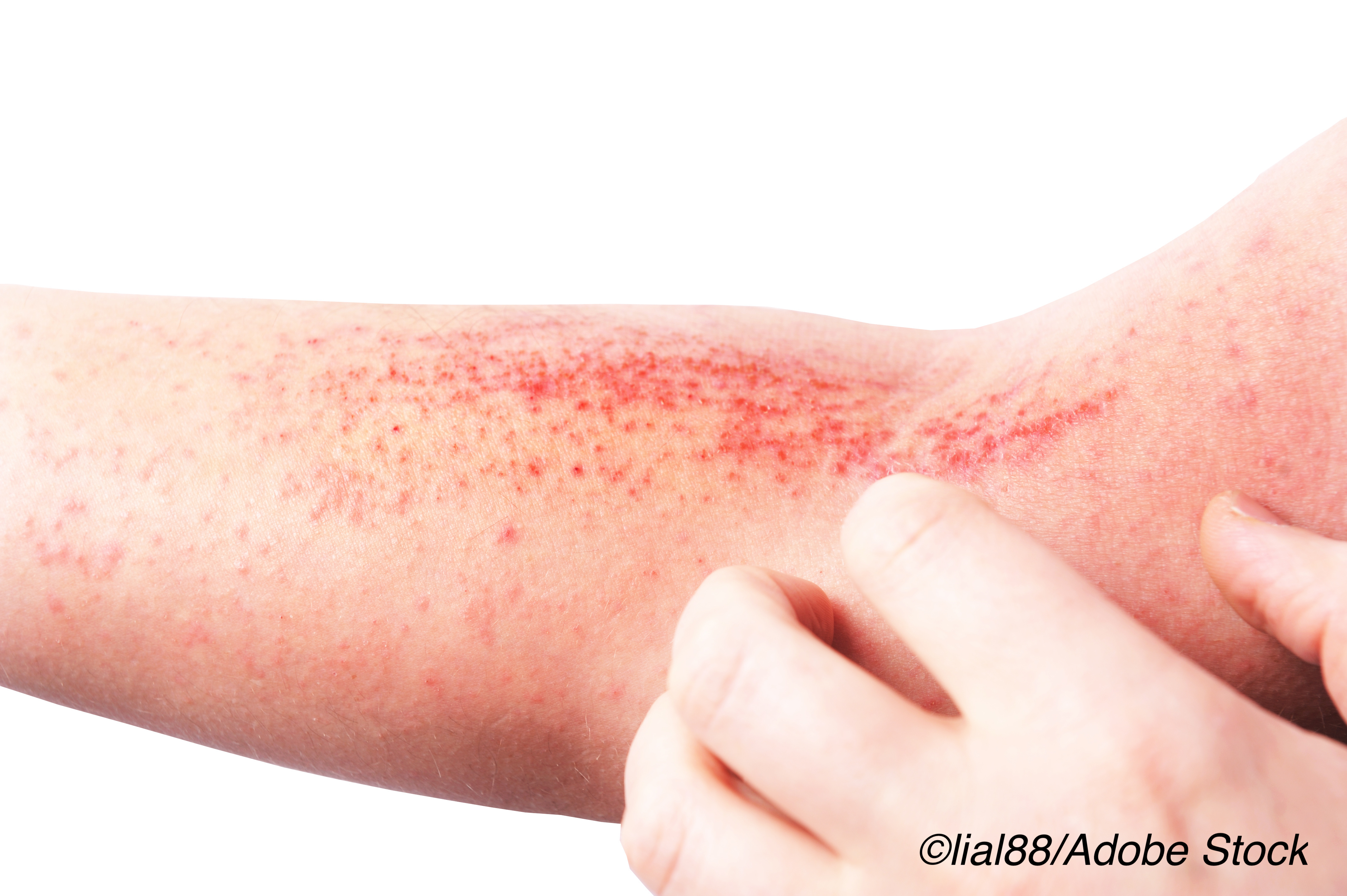
Nemolizumab, when used with topical agents, reduced pruritus in patients with atopic dermatitis, Japanese researchers found.
They also found, however, that the subcutaneous administration of the drug resulted in a greater incidence of injection site reactions than the use of placebo.
The results of their study were published in The New England Journal of Medicine.
A defining characteristic of atopic dermatitis is pruritus, which can have a profound effect on quality of life. The scratching associated with pruritus can cause skin damage, exacerbate inflammatory reactions, reduce sleep quality, and cause worse pruritus — a pattern colloquially known as the “itch-scratch” cycle.
Nemolizumab is a humanized monoclonal antibody against interleukin-31 receptor A — a key factor in pruritus and inflammation in atopic dermatitis — and the drug has been shown to reduce pruritus in phase II clinical trials.
In this phase III trial, researchers led by Kenji Kabashima, MD, PhD, Department of Dermatology, Graduate School of Medicine, Kyoto University, pitted nemolizumab, administered concomitantly with topical agents, against placebo in patients with atopic dermatitis and inadequately controlled moderate-to-severe pruritus.
The 16-week, double-blind trial included 143 patients who were randomly assigned to receive nemolizumab and 72 who received placebo. These patients were 13 years or older, had shown inadequate responses to medium-potency topical glucocorticoids or to topical calcineurin inhibitors (a score of ≥3 on a 5-level itch scale), and had visual-analogue scale (VAS) scores of ≥50 for pruritus (range, 0 to 100, with higher scores indicating worse pruritus) and Eczema Area and Severity Index (EASI) scores of >10 (range, 0 to 72, with higher scores indicating greater severity) on the day of randomization.
The median baseline scores for the study population were 75.4 for the pruritus VAS score, 3.0 for the score on the five-level itch scale, and 23.2 for the EASI score.
The primary endpoint of the trial was the mean percent change in the VAS score from baseline to week 16, while secondary endpoints included change in EASI score, a score of 4 or less on the Dermatology Life Quality Index (DLQI; range, 0 to 30, with higher scores indicating a greater effect on daily life), and a score of 7 or less on the Insomnia Severity Index (ISI).
Kabashima and colleagues found that, after 16 weeks:
- The mean percent change from baseline in the pruritus VAS score was −42.8% in the nemolizumab group and −21.4% in the placebo group, for a difference of −21.5 percentage points.
- The mean percent change in the EASI score was −45.9% with nemolizumab and −33.2% with placebo.
- The percentage of patients with a DLQI score of 4 or less was 40% in the nemolizumab group and 22% in the placebo group.
- The percentage of patients with an ISI score of 7 or less was 55% in the nemolizumab group and 21% in the placebo group.
As for safety, 71% of patients in each group reported adverse events, mostly mild or moderate in severity. Severe adverse events were reported by three patients (2%) in the nemolizumab group and included Meniere’s disease (n=1), acute pancreatitis (n=1), and atopic dermatitis (n=1). In addition, the incidence of injection-related reactions was 8% in the nemolizumab group compared to just 3% in the placebo group.
“The most commonly reported adverse event of special interest was worsening atopic dermatitis, occurring in 24% of the patients in the nemolizumab group and 21% of those in the placebo group,” the authors reported, although they also pointed out that those patients had reductions in pruritus as measured by the VAS score.
The trial showed that nemolizumab, when used with topical agents, does reduce pruritus in patients with atopic dermatitis who had previously had an inadequate response to topical agents and antihistamines, the authors wrote. Thus, “Nemolizumab plus topical agents may ameliorate both pruritus and signs of eczema and may lessen the severity of atopic dermatitis by disrupting the itch–scratch cycle,” they concluded.
Kabashima and colleagues also suggested that longer and larger trials are necessary to determine the drug’s safety and the durability of its effect in treating atopic dermatitis.
-
Subcutaneously administered nemolizumab, along with topical agents, reduces pruritus in patients with atopic dermatitis who previously had inadequate responses to medium-potency topical glucocorticoids or to topical calcineurin inhibitors.
-
Compared to placebo, however, administration of nemolizumab resulted in more injection-related reactions.
Michael Bassett, Contributing Writer, BreakingMED™
Kabashima reports receiving consulting fees from Maruho.
Cat ID: 105
Topic ID: 75,105,730,105,449,192,925


